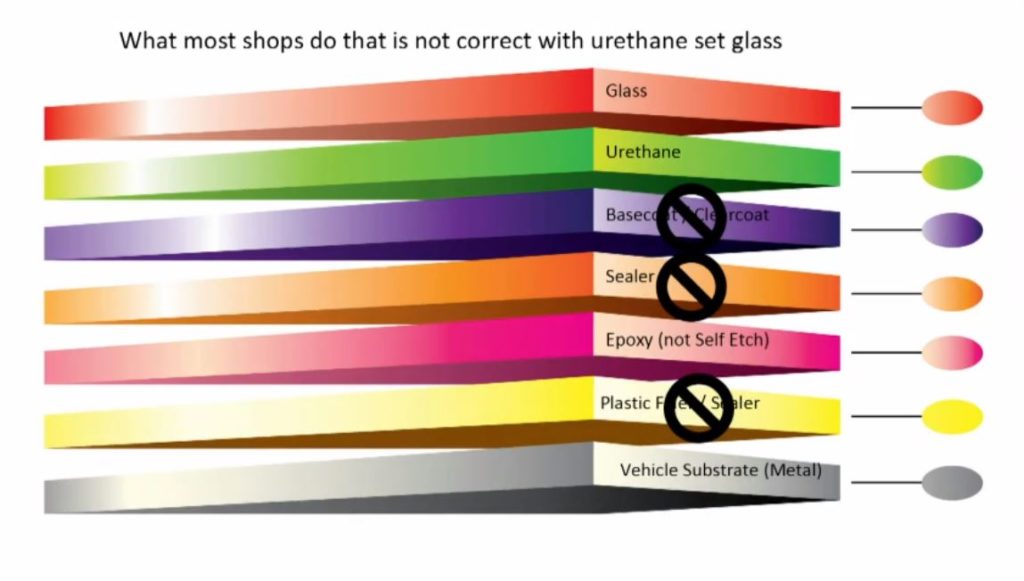
‘Repair U’: Incorrect glass installation could also have made $31.5M Honda Fit case
By onBusiness Practices | Legal | Repair Operations | Technology
Two collision repair industry leaders who’ve served as expert witnesses themselves suggested Wednesday that what they said seemed to be an incorrect glass installation could have been cited to win the recent $31.5 million case against a Dallas collision repairer.
Seebachan v. John Eagle Collision Center focused on Matthew and Marcia Seebachan’s 2010 Honda Fit roof being adhesive-bonded to the vehicle during a 2012 hail repair for the prior owner instead of welded as Honda dictates.
A jury in October found the auto body shop’s violation of OEM procedures during the work was responsible for 75 percent of Matthew and Marcia Seebachan’s ordeal related to the 2013 crash of their used Fit— and therefore $31.5 million of the $42 million awarded in damages. (The case settled recently for an unknown amount.)
The Seebachans were traveling in the Fit on a 75 mph stretch of road in 2013 when a 2010 Toyota Tundra in the other lane hydroplaned into their path, leading to the Fit striking the right front quarter of the Tundra in a T-bone collision and catching on fire.
Had the roof been welded following OEM specifications during the repair, the Seebachans might have experienced far less severe injuries in the crash, attorney Todd Tracy successfully argued.
But Tracy had another card to play as well, “Repair University Live” host Kristen Felder (Collision Hub) and guest Mark Olson (Vehicle Collision Experts) said during the broadcast Wednesday. (A subscription to the $30 year-long series is required to view the episode.)
Felder said that when she first saw the photo of the Seebachans’ devastated Fit during the lawsuit announcement in July, her first thought was the windshield would be the culprit.
Olson said the vehicle appears to have no urethane residue where the windshield would have been bonded to the roof, and Felder noted what she said was the “uniformity of the coloration” from the roof to that flange. Urethane residue remained on the sides of the windshield; in fact, the glass is still attached to the car there, Felder said.
Thus, “I would be very confident” that the shop refinished the flange for the glass with basecoat and clearcoat, she said.
But such painting is generally incorrect and can affect the glass’ bond, the duo said on the show. Typically, glass is joined by urethane to a substrate bearing a coat of epoxy (not the self-etching kind), according to Olson. You don’t want any basecoat, clearcoat, sealer or body filler between the glass and substrate — all are weak links which could potentially fail in a collision, according to Olson.
“The urethane’s only as good as what it’s attached to,” he said. Any link in the chain breaks, and “the windshield’s coming out,” he said.
Windshields can channel energy during a collision, and a failure here could have sent that energy into other areas of the car, Olson and Felder indicated — just as Tracy showed the roof to have done.
“You want to consider any urethane-set glass on any automobile is structural, just like a frame rail,” Olson said.
Olson said that he spoke with Tracy about the glass being a factor, and Tracy told him they had noticed it as well, but didn’t have to bring it up because they already had a case in the incorrectly bonded roof.
“The glass would have been his 43 million-dollar door” even if the roof had been welded properly, Felder said.
John Eagle Collision body shop director Boyce Willis and attorneys for the shop had not yet returned messages left early Wednesday afternoon seeking comment.
More information:
Collision Hub “Repair University Live,” Nov. 29, 2017
Images:
“Repair University Live” host Kristen Felder (Collision Hub) and guest Mark Olson (Vehicle Collision Experts) said during the Nov. 29, 2017, “Repair University Live” that what they said seemed to be an incorrect glass installation could have been cited to win the recent $31.5 million case against a Dallas collision repairer. (Screenshot from Collision Hub)
This 2010 Honda Fit burned following a collision with a hydroplaning 2010 Toyota Tundra. (Provided by Tracy Law Firm via PRNewsFoto)
Typically, glass is joined by urethane to a substrate bearing a coat of epoxy (not the self-etching kind), according to Vehicle Collision Experts CEO Mark Olson on the Nov. 29, 2017, “Repair University Live.” You don’t want any basecoat, clearcoat, sealer or body filler between the glass and substrate — all are weak links which could potentially fail in a collision, according to Olson. This slide was used during the show. (Screenshot from Collision Hub)


